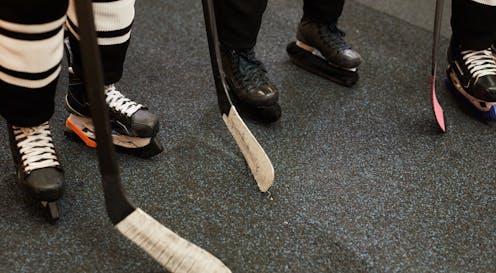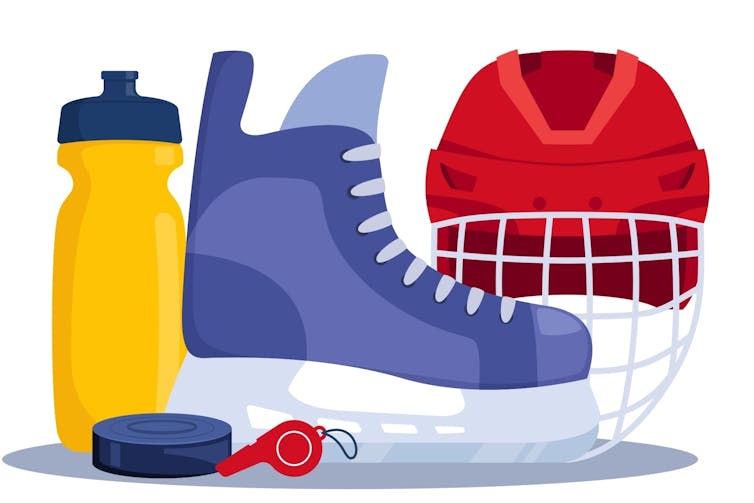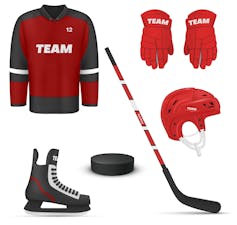
While engineering students may specialize in particular areas of engineering — for example, civil, electrical, chemical, mechanical or biomedical engineering — they all work in a similar way in applying design thinking.
Design thinking is a problem-solving approach that emphasizes tailored innovation.
What follows is a look at design thinking seen through a first-year project at Western University’s John M. Thompson Centre for Engineering Leadership and Innovation.
As part of their core curriculum, students pursued engineering experiences through practising design thinking with a variety of organizations including George Bray Sports Association (GBSA). The association was created to offer hockey opportunties for children and youth with disabilities. Today, athletes with this inclusive league may experience conditions such as Down syndrome, autism, ADHD, deafness, visual impairments and other challenges.
Applying design thinking
Three GBSA projects were among 10 community projects where students worked to apply design thinking.
Other projects included improving rock climbing opportunities for visually impaired people at the Canadian National Institute for the Blind, developing inclusive school yard games for kindergarteners experiencing exclusion at Thames Valley District School Board and exploring solutions for people with disabilities and workforce entry barriers at employment services specialist Hutton House.

Design thinking begins by defining a problem. While people practise design thinking across disciplines, when it’s taught as part of industrial design and innovation it incorporates learning about intellectual property (open-source, copyrights and patents).
All the students worked through similar processes, exemplified here through a look at projects with GBSA.
1. Broadly defining the problem
Angela Mawdsley, an assistant professor of engineering at Western, and I worked closely with GBSA leadership to analyze their operations and identify potential areas where design thinking could have an impact towards solving problems. Emphasis was given to potential problems that could not only be solved in the moment, resulting in a better immediate experience for GBSA, but that could also yield solutions applicable to broader situations.
Three candidate problems emerged:
1. Playing beyond the whistle: Some of the younger players, either due to deafness, cochlear implants, cranial shunts (a device draining fluid from the brain), attention disorders or other difficulties with focus, can often be seen to carry on in hockey play, after the referee blows the whistle.
2. Many players are challenged in learning how to skate: Standardized devices for learning to skate (sometimes popularly called “skate mates”) present size and use issues. Use issues include not considering relative strength or weakness of a player’s ankles, a key criteria in establishing effective push. Also, some athletes do not progress beyond using a device, so devices must be able to pass between the player’s bench and the ice.

3. Players forgetting hockey items: Hockey requires a lot of equipment that needs regular airing and cleaning. Regardless of whether kids or parents pack an equipment bag, something can be left out, leading to pre-game disappointment. GBSA may be able to find an emergency replacement for items like elbow pads, but other items are too individual (like skates) or too personal (like jocks).
Each student group working with GBSA tackled one of these problems.
2. Understanding via empathizing, reframing
Design thinking involves engaging with the user and learning as much as possible. This means studying, even experiencing the situation. But more significantly it means experiencing empathy with the person or group whose problem it is. Empathy is defined as understanding and sharing the feelings of another person — like love, joy, satisfaction, disappointment, frustration, discouragement in a given situation.
Design thinkers ask as many questions and collect as much information as possible. The information is then weeded, sorted and prioritized. This is known as reframing.
By following an iterative process of empathizing and reframing, the target problem can be settled upon. It involves challenging assumptions and redefining problems to identify alternative strategies and solutions that might not be immediately apparent.
My colleague and I practised empathizing and reframing when establishing something close to the scope of a problem for each of the three opportunities with GBSA. Once we provided boundaries to this scope, we then knew that students could replicate this process by fine-tuning the parameters of each broad problem.
Student groups pursued unique empathetic, experiential and research efforts, with student groups asking many questions with a GBSA representative in a series of Zoom meetings. A typical zoom call involved about 20 to 50 students, asking a total of about 50 questions.
3. Define the solution
A next stage involves generating ideas, trialling them via prototyping and then repeating this process until a solution is established.
This meant students developed a range of solutions which GBSA gave feedback on. Preferred solutions could then be championed by professors and executed by students hired to work in summer months.
For example, with the problem now established via research, experiential learning and empathy, students working on the learning to skate challenge built a small collection of assistive devices for skating which were then provided to GBSA for consideration.
Different student groups had yielded 10 different versions of assistive devices for skating, each with its own construction and assembly documentation. Among these different models, GBSA staff chose one to develop further in the summer months.
The project to track missing equipment yielded a favoured solution by GBSA: a software solution to be available for all GBSA families in 2024.
For the problem of playing beyond the whistle, students explored a range of ideas from American Sign Language, to other sensory approaches. ASL was tough to implement because the player is not always looking at the referee when play stops. One approach commonly settled on included introducing a system whereby when the referee blew an electronically modified whistle, an FM signal was transmitted from the whistle to a receiver on the player, who felt a vibration.
Taking it a step further, professors were able to hire student support in the summer, and leverage on campus expertise, to generate open-source Bluetooth solutions. The transmission strategy remained the same, but the reception strategy changed to be altered from one of feeling vibration, to one of hearing “the play has stopped” in an existing hearing aid the player might be wearing.
“Hearing the whistle” solutions are under further investigation by the research team at the National Centre for Audiology at Western University, where work to replicate the Bluetooth solution for technical advances in Bluetooth known as “Auracast” is under consideration.
Kevin Lawrence McGuire does not work for, consult, own shares in or receive funding from any company or organisation that would benefit from this article, and has disclosed no relevant affiliations beyond their academic appointment.
This article was originally published on The Conversation. Read the original article.







